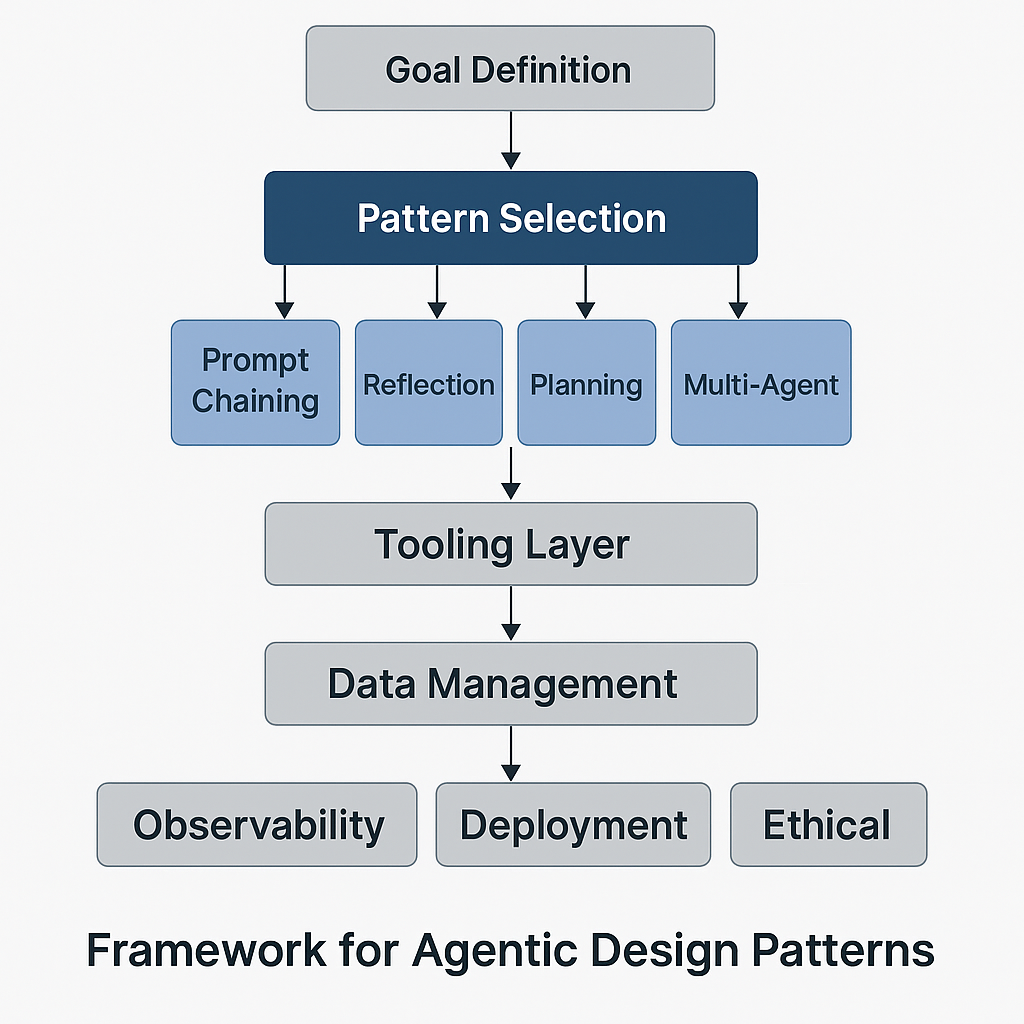Comprehensive Framework for Enterprise Agentic Systems
A structured approach to enterprise agentic systems

Goal Definition & Problem Space Analysis
Overview
Clear articulation of business problems and desired outcomes is fundamental to successful agentic system implementation.
Key Components
- Business Problem Articulation: Clearly articulate the business problem and desired outcomes.
- Goal Decomposition: Decompose complex goals into sub-goals amenable to agentic solutions.
- External Interaction Points: Identify necessary external interactions (data sources, systems, human intervention points).
Agentic Pattern Selection & Design
Overview
Strategic selection and design of agentic patterns to achieve business objectives.
Key Components
- Core Pattern Mapping: Map sub-goals to appropriate core agentic patterns (e.g., Planning for sequential tasks, Multi-Agent for collaborative expertise, Tool Use for external interactions).
- Orchestration Flow: Design the orchestration flow: how patterns chain, route, parallelize, and reflect.
- Autonomy Levels: Consider the level of autonomy and required human-in-the-loop interventions.
Tooling & Integration Layer
Overview
Robust integration with external systems and tools is essential for agent functionality.
Key Components
- Tool Identification: Identify and define necessary external tools (APIs, databases, legacy systems) for agent interaction.
- Secure Interfaces: Develop secure and performant interfaces for agents to interact with these tools.
- Error Handling: Establish robust error handling and retry mechanisms for tool calls.
Data & Knowledge Management
Overview
Effective data and knowledge management is crucial for agent performance and reliability.
Key Components
- Data Pipelines: Define data sources and pipelines for agent input and output.
- Memory Management: Implement strategies for agent memory, context management, and knowledge retrieval (e.g., RAG architectures).
- Data Governance: Ensure data governance, privacy, and security measures are in place.
Observability & Governance Layer
Overview
Comprehensive monitoring and governance ensures system reliability and compliance.
Key Components
- Logging & Monitoring: Implement comprehensive logging, monitoring, and tracing for agent decisions, actions, and performance.
- Behavior Governance: Establish governance mechanisms for prompt engineering, model updates, and agent behavior.
- Performance KPIs: Define KPIs for agent performance and business impact.
Deployment & Operations
Overview
Strategic deployment and operational management ensure system scalability and reliability.
Key Components
- Infrastructure Selection: Select appropriate deployment infrastructure (cloud, on-premise, hybrid).
- Scalability: Implement scalable and resilient deployment strategies.
- CI/CD Pipeline: Establish continuous integration/continuous deployment (CI/CD) pipelines for agent updates.
Ethical & Safety Considerations
Overview
Ethical considerations and safety protocols are essential for responsible AI implementation.
Key Components
- Bias Mitigation: Proactively identify and mitigate potential biases, fairness issues, and unintended consequences.
- Transparency: Design for transparency and explainability where possible.
- Safety Protocols: Establish clear safety protocols and human oversight.